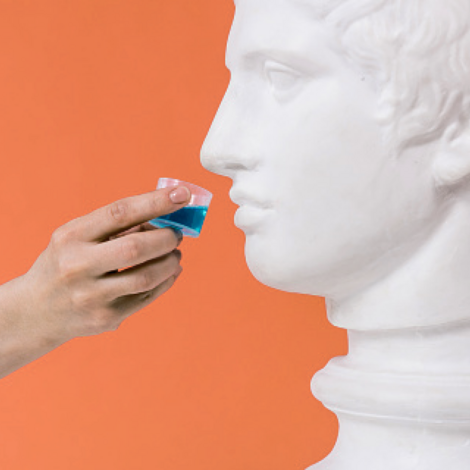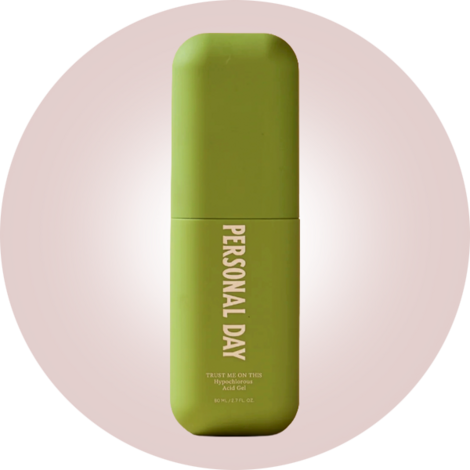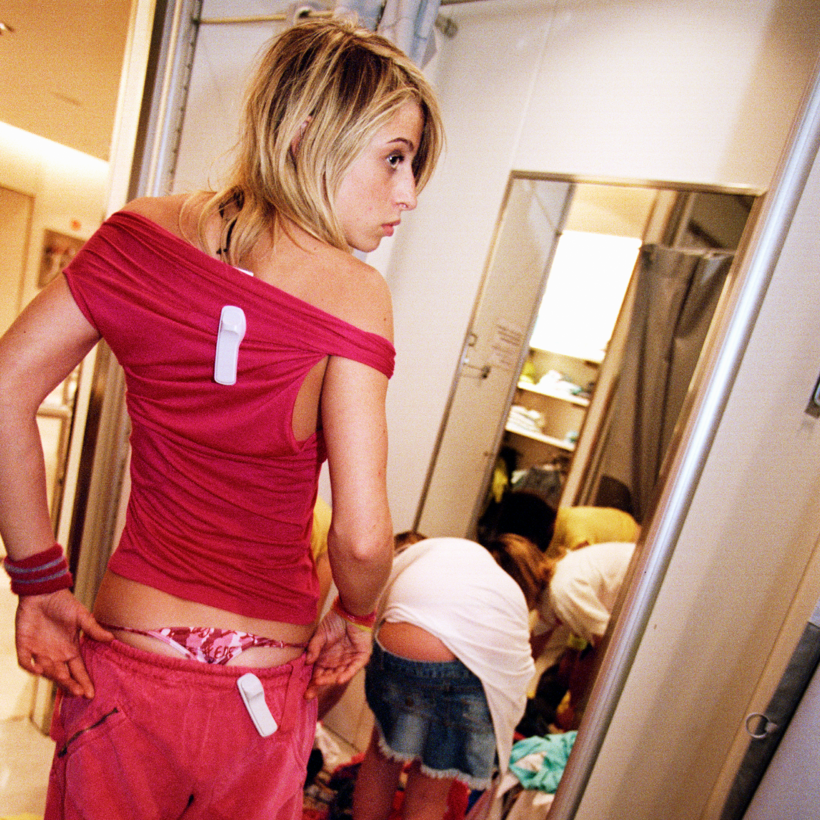I had prepared to spend a day at the American Dream somberly mourning American retail, dragging my black lace veil across every tiled concourse, only to find, like Mary Magdalene on the third day, that the New Jersey mall had ascended to a higher plane; that the air was suffused with early-spring sunlight, the laughs and screams of mall-goers, and the pillowy fumes of fresh-baked Cinnabons.
As long as you’ve got money to spend and are the kind of person for whom an afternoon at the mall doesn’t sound akin to wandering the halls of hell, it is difficult not to have a splendid time. The Dream was built to last 100 or 200 years, according to one of the developers—a place of communion and exposition for generations not yet conceived—but it was made just for you.
American Dream Meadowlands is the second-largest shopping mall in the United States, the first of its kind to be attempted in the 21st century, and the only one to include multiple theme parks, advertising varying levels of wetness.
After several prolonged fits and starts, the mall was scheduled to fully open to throngs of eager shoppers in March 2020. “We opened and closed in the same week,” a manager at Ulta told me as she re-stocked some Lancôme serums. It wasn’t until October 2020, some 16 years after construction began, that the entire American Dream finally opened to a public that was not quite sure if it was still interested.
There was once a time, not too long ago, when visiting a shopping mall felt unavoidable and even necessary for participation in human society, but a series of digital conveniences (such as click-to-order) and small apocalypses (like the coronavirus pandemic) have contributed to what appears to be sunset for shopping centers. (Or at least in the United States—other countries do not seem to hate their malls as much as we do.) American Dream seems at least somewhat aware of this, its Web site imploring would-be visitors to “feel the excitement of making memories again,” sounding a little more than slightly desperate.
From where I am seated—in a faux-cowhide-upholstered chair at a coffee shop on Level 2 of Court B, sandwiched deliciously between indoor skiing and Häagen-Dazs—it seems that the mall is doing pretty well, actually, thank you for asking!
From Swamp to Sublime
If you skip rush hour, charter an Uber, and aim to arrive at the mall the second it opens, it takes only about 15 minutes to travel from Times Square to the swamp where American Dream lives and works. Some 10,000 years ago, mastodons roamed alongside the Hackensack estuary. Some 400 years ago, Native Americans were displaced by European colonists. By the 20th century, the Meadowlands were known for their landfills. Then there was concern about the landfills, which led to million-dollar cash infusions and cleanups. Now there’s a stadium, a racetrack, a few hotels, and a fabulous new mall.
An escalator picks me up in the subterranean Lyft lounge and delivers me into the magnificent and heaving belly of the billion-dollar beast known as Court B—an atrium that hinges the entertainment aspect of the mall (ski slope, theme parks, miniature golf) with the shopping aspect of the mall (everything else). Early write-ups tended to emphasize a dearth of visitors, with some photos of cavernous and people-less halls looking rather dead on arrival; I was shocked, a little delighted, and a little disappointed to find other humans everywhere, many of them tiny and shrieking.
The total floor plan clocks in at just over three million square feet, or about one and a half J.F.K. terminals large, which you are supposed to navigate using a combination of intuition and sporadically placed map kiosks that are also, uh, hmm, actually … Where are the map kiosks?
A friendly cappuccino-monger didn’t initially understand what I was asking him. “Map?,” he said, the final p sound popping from his lips. “Where are you trying to go?”
When I explained that I was trying to go anywhere—really anywhere—his arm unfurled toward a nearby atrium. He gestured at a digital kiosk that was invisible to us, hidden beyond a bucolic artificial landscape presided over by twin blushing gnome statues. “It’s behind that,” he said, “that” meaning the Garden of the Twin Gnomes.
Every atom that comprises American Dream is engineered to induce fantasy, from its spontaneously placed gardens to its unrelenting faith in the concept of a shopping mall. Its every value is predicated on its ability to psychically remove shoppers from the world they live in. The fantasy is so pervasive that it is easy to imagine the Dream is its own Dream, its various warrens constantly collapsing and reorganizing according to the whimsies of any particular mall-goer.
Along the Dream’s endless corridors is every store you have ever heard of, plus 100 you haven’t, and 40 or so that exist only for you, in your own retail Brigadoon. There is simply no other explanation for Candle Time, stocked with several lifetimes’ worth of scented candles, diffusers, incense, and an inexplicable selection of guitars and keyboards for 50 percent off. A few doors down, I bought a silicone AirPods case with cartoon eyes ($14). “We just opened on Friday!” the cashier said cheerfully.
Drifting between atriums, with only gardens and memory to chart my path, I could not help but feel an intensifying desire to spend $60 on an item of fast fashion. The writer who observed the Dream for The New York Times called the mall “a performance piece ruminating on the corporate takeover of nature and society.” There is a small part of me that is tempted to make some incisive and award-winning observation about systems of capitalism, but the feeling passes, thank Mall God!, and I head toward the Avenue instead.
A Uniquely American Hustle
The Avenue at American Dream Meadowlands is the Rodeo Drive of East Rutherford, New Jersey. In size, it approximates two or three airplane hangars set end to end; in design, it approximates a hallucinogenic trip through the mind of my seven-year-old niece.
Far above my head, a canopy of lights twinkles endlessly; in front of me, an interminable series of jewel-toned couches stretch along a dancing fountain. An intrepid young girl dipped her finger in the fountain, gasped, and then ran shouting down the Avenue: “Mommy, it’s warm!”
Most of the Avenue, along with much of the rest of the mall, is covered over with billboard-sized coming soon façades promising watches and fine fragrance and Balenciaga. At Sephora, four employees helped one woman in flannel pajamas and a puffer buy an Yves Saint Laurent Touche Éclat highlighting pen; at Zara, one associate snapped at a woman waiting for the dressing room, “They’re not open this morning, O.K.?”

For purely journalistic reasons, I am dying to know if any of these stores are generating profits. In the United States, foot traffic at indoor malls has picked up in 2023, though figures are still short of pre-pandemic levels, according to analytics from Placer.ai. “It’s more of a weekend mall,” the Ulta manager said, her eyes surveying the empty store. “Weekdays, it’s pretty much like this.”
At the end of the Avenue, I spoke briefly with the manager of the beauty department at Saks, who was tall and flawlessly painted and presided over a labyrinth of displays with the austerity of a prison warden. When I asked how business was, she said, “We’re good,” in a tone that suggested, “Please do not ask me how business is.” I apologized, bowed for some reason, and adjourned to the sale section, feeling my cheeks get warm and pink.
Saks was running an extra-percentage-off promo on marked-down items, and since I am only human, I ventured to try on a Comme des Garçons tee that would have been a sweet deal if it did not fit like a condom on a banana. Have you ever been seized by a feeling of I need to leave this store right now or I will explode into a million bits? On my way out, I tried to avoid the vigilance of the beauty-department manager, who was mercifully busy showing a group of trainees the escalator system.
Feeding the Beast
Honest to Mall God, my plan for lunch was to diplomatically sample an assortment of dishes from the United Nations of food counters located in the Coca-Cola Eats concourse, with fast-casual delegates from Japan (Sushi Express) and Italy (Bigoi Venezia) and Columbus, Ohio (Charley’s), and also Taco Bell. But I experienced a brief and powerful episode of all-other-foods-induced-nausea upon seeing Jollibee, the Filipino fried-chicken chain I had always wanted to try. (I love fried chicken.) Brief agony: Do I get the two-piece and starve to death, or the three-piece and gorge to immobility?
I got the three-piece. And I’d almost finished it when, at the magic time of 12:34, a horrible alarm shrieked through the air, accompanied by flashing lights. A recorded voice announced a fire in a distant corner of the mall, but it was almost impossible to decipher the message. Some bewildered visitors looked up from their food and toward heaven, or wherever the alarm was coming from, but after it seemed as though we all made a decision to ignore it, it eventually stopped.
There is one and only one unimpeachably perfect thing about American Dream, and that is the existence of a clean and sparsely attended bathroom within a 20-second walk from wherever you are at any given moment. This is good news for anybody who experiences queasiness when feeling overwhelmed, or for people committed to visiting the mall for 10 straight hours, and, in the center of that Venn diagram, for me.
Lost in Time (and Space)
It is hard to be alone at American Dream Meadowlands, unless you’re at Ulta on a weekday. Whenever my soul yearned for solitude, I had to trundle all the way to a forgotten corner of Level 3 that might one day bloom into a second food court but so far hosted only a burger restaurant licensed by a popular YouTuber and a handful of decorative water features. Those who knew where they were going avoided this corner of the mall; those who showed up were certainly lost.
If you are looking to observe a broad but gorgeous and small but representative mosaic of human diversity, you could do far worse than choosing American Dream’s pool of Monday visitors. There were foreign tourists and native New Jerseyans, and single families spanning multiple generations, and groups of intimidatingly cool teens snickering inside Spencer’s, which vends body jewelry, lava lamps, and I <3 Hot Dads T-shirts. The only other solo visitor I saw was myself reflected back at me in the Mirror Maze ($10), which was fun until it wasn’t (about six minutes).
At the Nickelodeon Universe amusement park (dry), I paid to ride two roller coasters ($21) and, due to my solo-rider status, was treated with the care and priority of a senior citizen. On the Teenage Mutant Ninja Turtles Shellraiser, before an acutely angled drop, the car paused in full postcard view of the Manhattan skyline. Then it jerked forward like a cruel joke, and then it dropped outright.
My nausea returned briefly in the Oreo Café, at the tip-top of IT’SUGAR, New Jersey’s largest candy emporium. Looking out beyond a Statue of Liberty made entirely of jelly beans, it is possible to see hundreds of people simultaneously having the times of their lives. Broad sheets of sunlight stretched yellow across the floor and began to turn pink, as American Dream approached sunset. A child, bereft at the idea of leaving their new favorite place on earth, was comforted by their sibling: “Don’t cry. Let’s come back next week!”
The journey home was faster at night. I tried to remember the last time I had been to a mall, but my memories of those were interrupted by scenes I had just experienced, which were, I have to admit, identical to the memories of malls past—of long walks on tiled floors, of endless laps around identical concourses—until they all condensed into a pleasant cloud of nostalgia. I could not love a mall any more than I could love a post office or a Verizon Wireless authorized retailer, but I feel a powerful affection for an institution that has been in my life for so long, and that I have come to rely on for more than the sum of its stores and restaurants and roller coasters. As a kid, it was where I always wanted to go; as a teen, it was where I always ended up. Is it any wonder at all that it feels like home?
Brennan Kilbane is a New York–based writer. He is originally from Cleveland, and his interviews and essays have appeared in GQ, New York magazine, and Allure, where he was recently on staff as a features writer





